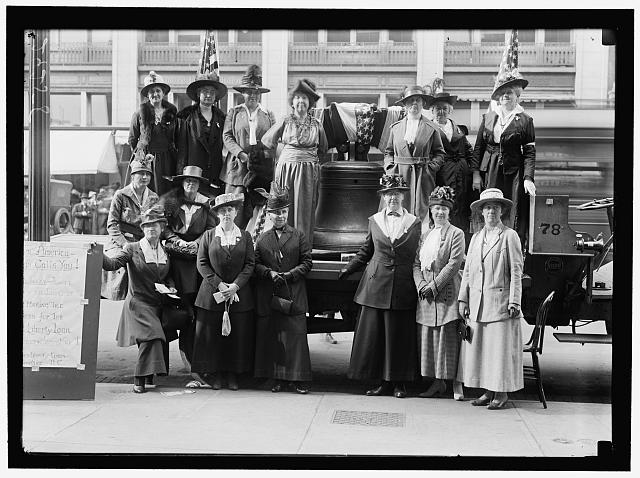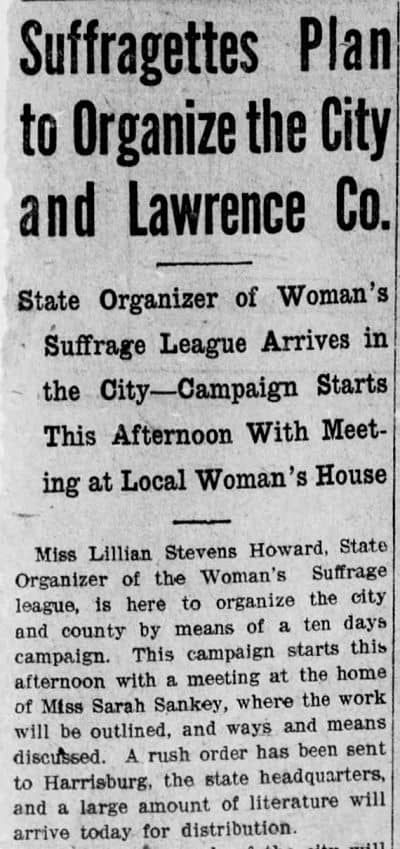FOR A LISTING OF ALL OUR OTHER TOURS, VISIT https://www.lawrencechs.org/all-tours/
This tour of select properties in New Castle’s North Hill Historic District tells the story of New Castle citizens who helped defend American freedoms, and to expand access to freedom and equality for all.
Historic events like the Civil War, European immigration, and the women’s suffrage movement changed American society in profound ways. The growth in rights for African Americans, women, and European immigrants helped fashion a new idea of America – a country diverse in culture, language, and experiences.
Each site on this tour contains introductory information on residents at those addresses; click the “Learn More” on each stop to explore their lives and activities in greater depth.
The Berry and White Families
African American Leaders and the Abolitionist Movement
While the original home at this address is no longer extant, this site was home to the Berrys and the Whites, two families who played an important role in advancing freedom and equality for African Americans during the 19th century.
The Ehrlich Family
Jewish Immigrants Find Refuge, Build Community in New Castle
Norman Ehrlich and his wife Blanche Ehrlich lived at 340 Laurel Boulevard with Blanche’s father, Nathan Strauss, during the 1910s and 1920s.
The Ehrlichs were active participants in New Castle’s Jewish community, serving as founding members of the city’s Temple Israel in 1926. Mrs. Blanche Ehrlich was also a founder and leader in the city’s section of the National Council of Jewish Women.
Dr. Eliah and Ina Kaplan
Respected Physician and Local Leader in Zionism
This site served as the home and medical office of Dr. Eliah Kaplan, a Jewish immigrant born in Russia (modern-day Poland) on October 12, 1884. He arrived in the United States in 1903. After graduating from New Castle High School in 1909, he went on to medical school in Philadelphia, then returned to New Castle, where he became an esteemed physician. In 1917, he married Ina Rabinowitz, and the couple had four sons, Sherman, Joshua, Bart and Yale.
Joseph R. White, Civil War Veteran
Joseph R. White moved to the house at 22 East Grant Street around 1900 with his wife Mary McClymonds White and their adult children Florence and Charles. By that time, Joseph was a prominent businessman in New Castle; in his younger days, however, he served with the much-celebrated “Roundhead Regiment” in the American Civil War.
Morgan Hofius, Civil War Veteran
Morgan Hofius enlisted at the age of 18 on September 6, 1864, as a private in Company D of the 211th Regiment of Pennsylvania Volunteers. Hofius fought in the siege of Petersburg and Richmond, Virginia in the late months of 1864. He was wounded on the final day of the siege of Petersburg, April 2, 1865.
In 1871, Mr. Hofius married, and his wife Clara Hofius later became a member of the Grove City branch of the Women’s Relief Corps, the ladies’ auxiliary to the Grand Army of the Republic, whose mission was to preserve the memory and legacy of Union soldiers.
In 1900, Morgan Hofius, a supervisor for coal mines, his wife Clara, and their adult children Harry and Bessie, lived at 124 East Wallace Avenue.
Sarah Sankey, Activist for Woman’s Suffrage
Sarah Sankey lived at 301 East Wallace with her father Charlie Sankey, her mother Lavinia Sankey, and her sisters Margaret and Marian throughout the 1910s.
An educator for many years, Sarah Sankey played an important role in the women’s suffrage movement, perhaps the most significant political cause of the Progressive Era.
Thomas W. and Pamphila Phillips
Thomas and Pamphila Phillips lived at 455 Highland Avenue before moving to 905 Highland Avenue in 1910. Mrs. Phillips continued to live at 905 Highland Avenue following Mr. Phillips’ death in 1912, until her own passing in 1933.


Pamphila Phillips was a strong advocate for women’s suffrage and the social advancement of women broadly. She was the President of the Women’s Suffrage Organization of Lawrence County and also used the local media (the New Castle Herald and New Castle News) to help promote the suffrage movement to the public.
In addition to Mrs. Phillips’ advocacy for women’s suffrage, Mr. Phillips was also a prominent citizen of New Castle. He served as the president of Citizens National Bank, and was the Congressional representative for the 25th District of Pennsylvania from 1893 until 1897.
After Pamphila Phillips’ passing in 1933, the property remained in the family until 1963. It was purchased that year by the Christian Assembly Church from Mrs. Grace Phillips Johnson, and the current structure on the property was completed in 1968.
The “Justice Bell”
In 1915, suffragists in Pennsylvania waged a statewide campaign to support an amendment to the state constitution giving women the right to vote. To draw attention to the campaign, leaders in the movement created the “Justice Bell” a replica of the Liberty Bell, one of the nation’s most enduring symbols of freedom. Cast in bronze, weighing 2,000 pounds, and with its clapper symbolically shackled to its side, the Justice Bell (also called the “Woman’s Liberty Bell”) toured through all 66 counties in Pennsylvania in 1915.

(courtesy of the Library of Congress)
It arrived in New Castle on the afternoon of July 2, 1915 where it was the centerpiece of what the New Castle Herald proclaimed “the biggest political rally of its kind ever in New Castle” on the city’s Diamond. Mrs. Phillips marched with the Justice Bell through downtown New Castle, and vocally supported any politicians who pushed for state and federal women’s suffrage.
The referendum failed in 1915 in Pennsylvania, but the determination of the women who traveled some 5,000 miles across Pennsylvania endured, and ultimately met success with the ratification of the 19th Amendment in 1920.
FOR A LISTING OF ALL OUR OTHER TOURS, VISIT https://www.lawrencechs.org/all-tours/









